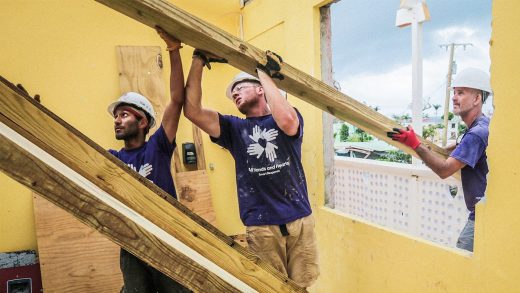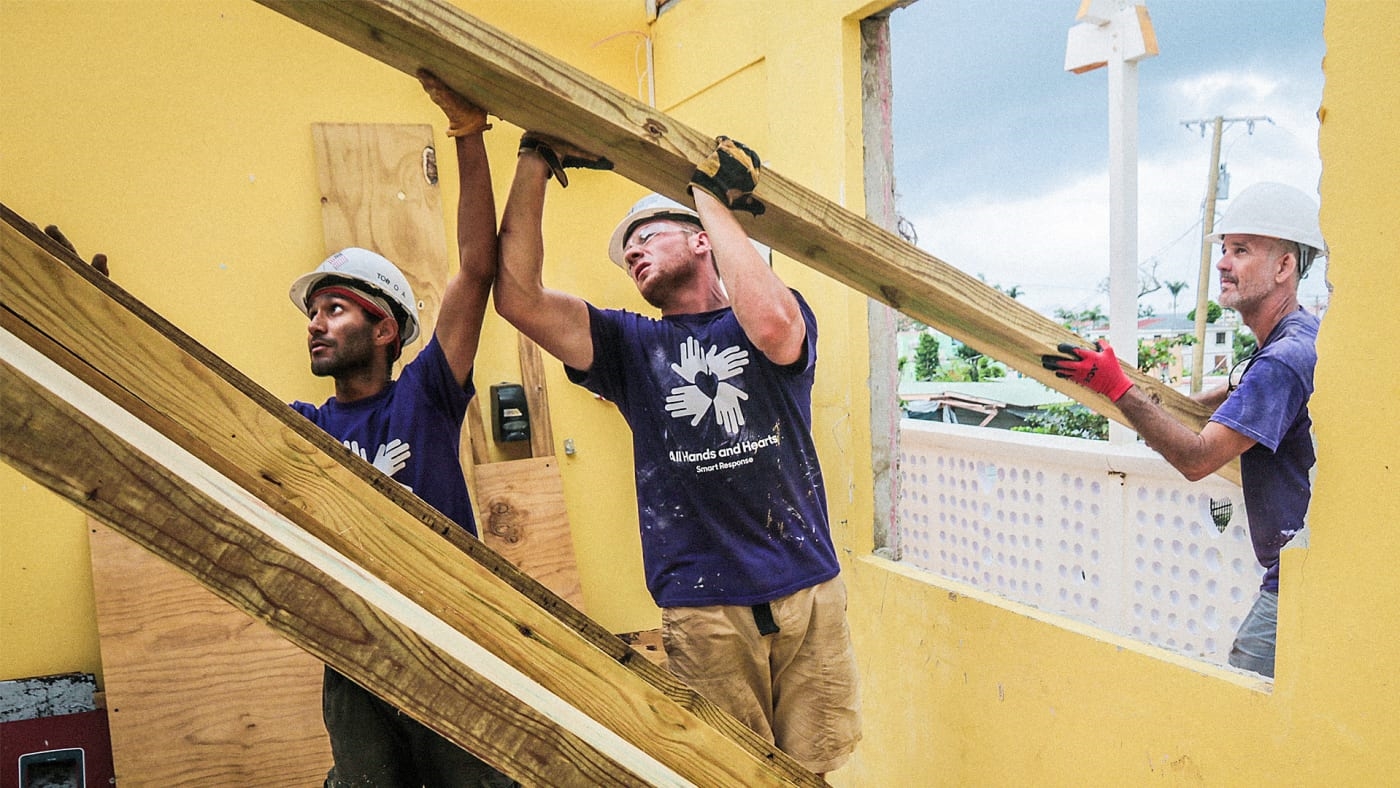What does a more thoughtful disaster response look like?
On September 14, Hurricane Florence made landfall in the Carolinas. Days after, flood waters continue to rise. Thousands of homes–over 4,300 in Bern, North Carolina alone–have sustained damage, and the full effects of the hurricane are not yet known.
But the pattern of response to Florence will be more predictable. Already, corporate donors are pledging commitments to aid affected areas, and fundraisers for organizations like Habitat for Humanity, the American Red Cross, and GlobalGiving are under way.
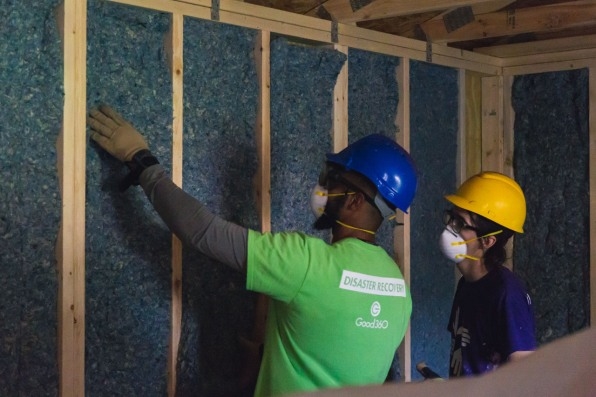
These rapid response efforts are crucial, but according to the nonprofit Center for Disaster Philanthropy, they too often signal the end of the line. Around 70% of the money and resources donated after a disaster goes to immediate response efforts, but in reality, recovery requires a long-term investment. Just 5% of money raised after a disaster goes toward extended recovery and rebuilding efforts, which is often where residents find themselves at a loss for aid. While federal programs like FEMA also provide assistance to affected people immediately after a disaster, grants for home repair and recovery generally only amount to a few thousand dollars, with no promise of extended or on-the-ground support.
Over the past several years, the CDP has worked to educate corporate donors, philanthropies, and the broader public about effective disaster response strategies (its Disaster Philanthropy Playbook, released in 2016, is a good primer). Now, a coalition of nonprofits–the disaster relief and recovery organization All Hands and Hearts-Smart Response, Good360, and Global Citizen–have teamed up to get individual and corporate donors alike to pledge to follow a more thoughtful pattern of post-disaster action.
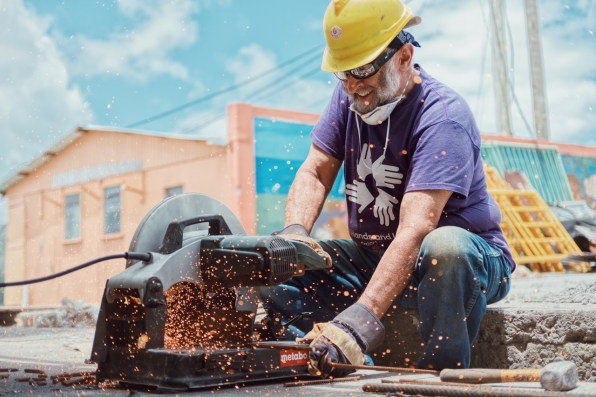
The pledge, says All Hands and Hearts cofounder Petra Nemcova, “is very simple, but could create significant ripple effects.” The Resilient Response pledge outlines a framework for the most effective ways of delivering immediate and long-term aid. It centers around six pillars:
These six pillars are meant to guide organizations toward amending some of the shortcomings of the current disaster response system. For one thing: There needs to be an overhaul in the way that the delivery of goods and resources is managed. As CEO of Good360, a nonprofit that works with over 400 large companies to encourage them to donate excess goods, rather than destroying them, Howard Sherman has a lot of experience overseeing how and when resources are allocated. And in the disaster recovery sector, it’s often not done well. Around 60% of the material goods that arrive in disaster-struck region end up in landfill. “Often, it’s the wrong goods at the wrong time,” Sherman says.
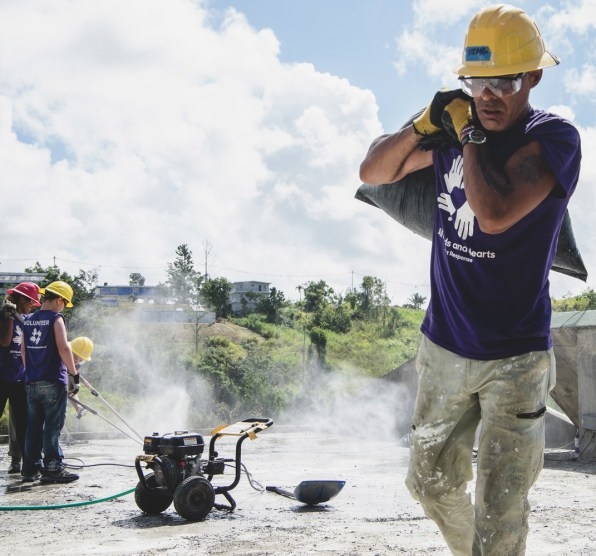
Following a disaster, recovery usually happens along a curve. The Carolinas are still in the early stages, where many people in communities are still struggling to access basic survival necessities. “Right now, it should be about sending life-saving and life-preserving supplies and money to organizations on the ground doing that work,” Sherman says. But often, corporate philanthropy efforts will get ahead of the curve. Some companies, Sherman says, start sending rebuilding supplies immediately after a disaster strikes, but those materials overwhelm aid workers and take up space in crucial distribution centers; delivery of those resources should be timed to when the community and residents are ready to actually undertake rebuilding efforts. Often, according to the recovery curve, that’s three or four months after the disaster hits.
Which leads to another issue: correcting lack of sustained engagement. The vast majority of resources are sent to an affected area within two months of a disaster. But through the Resilient Response framework, the founding nonprofits want to encourage corporations and philanthropies to more effectively spread their donations, or to continually recommit over the course of the whole recovery period.
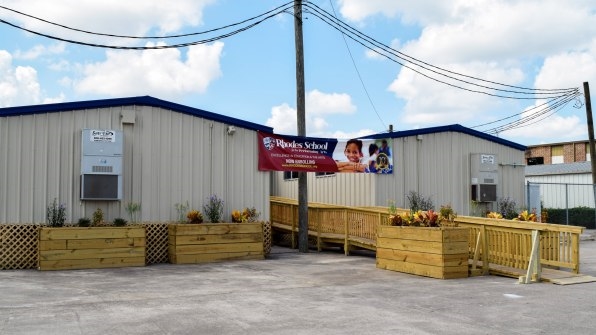
To that end, Good360, All Hands and Hearts, and Global Citizen have sourced commitments to the pledge from a range of companies that could play a role along the whole recovery curve. In the immediate response range, there’s Airbnb, which activates its local networks to find hosts that could shelter people or share resources, and CVS, which can deliver first aid and necessities. Ecolab can provide immediate water and energy resources. In the clean-up and recovery phase, partners like WalMart and Restoration Hardware can provide supplies and furniture. Their partnership with United Airlines and UPS facilitates transport of both volunteers and resources.
“We’re doing a lot of work with corporate donors to get them to think about the cadence of giving, and how they can give in a way that’s really aligned with need, and doesn’t contribute to waste,” Sherman says. Part of what the Resilient Response framework also calls for is greater communication between corporate and individual donors and people working on the ground in affected areas. Sherman cites the reporting that emerged last week about the vast quantity of water that sat unused on a runway in Ceiba, Puerto Rico, where both a lack of distribution infrastructure and recipient distrust of the water quality rendered it useless. But even then, shipments of water still continued to arrive and pile up. “It’s not just enough to send goods–you have to think about how those goods are going to be distributed responsibly on the ground,” Sherman says.
As severe storms become more commonplace, so do calls for aid. But for Nemcova, what’s disturbing is the way the public cycle of processing such disasters unfolds. “You hear people talking about it for maybe four or five weeks, and then at the one-year anniversary, and that’s it,” she says. She wants to see the Resilient Response framework catalyze a new mode of public understanding of and engagement with disasters, as much as it will encourage donors to adjust their pattern of giving. In doing so, she hopes that disaster recover organizations will be able to pull in enough resources over time to assisting across the whole recovery curve, not just in the immediate weeks after a disaster strikes.
(18)

